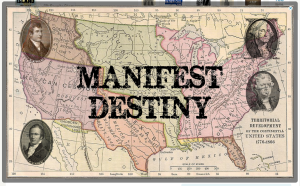Southwest Museum Supporters Protest Autry’s Handling Of Collection
As I’ve watched the dilemma of “The Autry National Center vs. the people of LA” unfold, I (unsurprisingly) always find myself siding with the Autry. The Southwest Museum provides a double conundrum because it is both a history museum and a historic object in itself. While it’s in an institution that seeks to conserve and educate the public about it’s collection, the museum itself is a space with provenance that is a source of local identity. In this case, what is best for the collection is not best for the community, and the community is having an understandably difficult time of accepting that. These protestors may see it as a “loss of taxpayer dollars,” but I think really it’s about a loss of identity and a cultural point of pride.
While I was an intern at the Autry, I toured the Southwest Museum and realized it would be impossible to open the building to the public. It’s not up to code for the public safety of a large number of people, and for them to make it so while meeting historic preservation codes would be a huge time and money investment. At this point, the SW Museum has yet to prove that it’s profitable for them to run. They do have a great collection, but it’s in dire need of costly conservation after being miss-appropriately cared for for a long number of years. And at the end of the day, running a museum is not cheap, nor lucrative, and I doubt these protestors understand there is much more that has to happen and be paid for behind the scenes before anything can be put on display.
However, I also see a fundamental lack of communication between museum and protestor. The SW Museum has been open to tour in the past, which I think was a great opportunity for people to come to know the state of the building and collection after a ten year closure. I think if more of these taxpayers had taken this intimate opportunity to see what the Autry has done with their money, they’d understand. But it doesn’t change the fact that the Autry is doing this largely out of their own pocket. They’re not looking to get rich off of the SW Museum; they want what is best for the collection’s preservation.
I also assume that the Autry moved the collection off-site to its Burbank storage facility because there simply wasn’t enough adequate storage space at the Southwest Museum to house it. Besides, if they do renovate the building, it would be a necessary step anyway. Lastly, it’s a museum, folks. There’s no way the city of Los Angeles is feeling any of the “loss of jobs” by not having the collection housed in the decrepit old museum. The Autry’s main campus is housed on Los Angeles city property, meaning essentially the location of the collection has no effect on jobs.
A very important point that the Autry failed to make in their statement is that the new Burbank center is also home to a new, innovative space for American Indians to interact with items from their collection. What these protestors may not understand is that American Indians who’ve allowed their cultural objects to become a part of the collection in return often expect their objects to be handled in a specific way in accordance to their beliefs. Sometimes they need to perform rituals with the objects, or they request they be stored apart from other objects, or not handled by menstruating women. The Autry understands these needs, and they were able to building the Burbank facility from scratch to meet them. The SW Museum simply cannot. It was opened 100 years ago, when the relationship between Native people and museums was much, much different, when museums did not consider the beliefs of the objects’ source communities in their practices.
My overall point is the Autry isn’t swindling anyone, or abusing taxpayer dollars. They want what is best for the collection, and that’s what their doing with what resources they have, both spatial and financial. These protestors need to look at the bigger issue and maybe ask themselves why the loss of the Southwest’s collection really bothers them. Hopefully they will come to agree that the collection’s safety is of paramount importance, and then begin to explore other options to redefine the role the SW Museum can play in their community.





